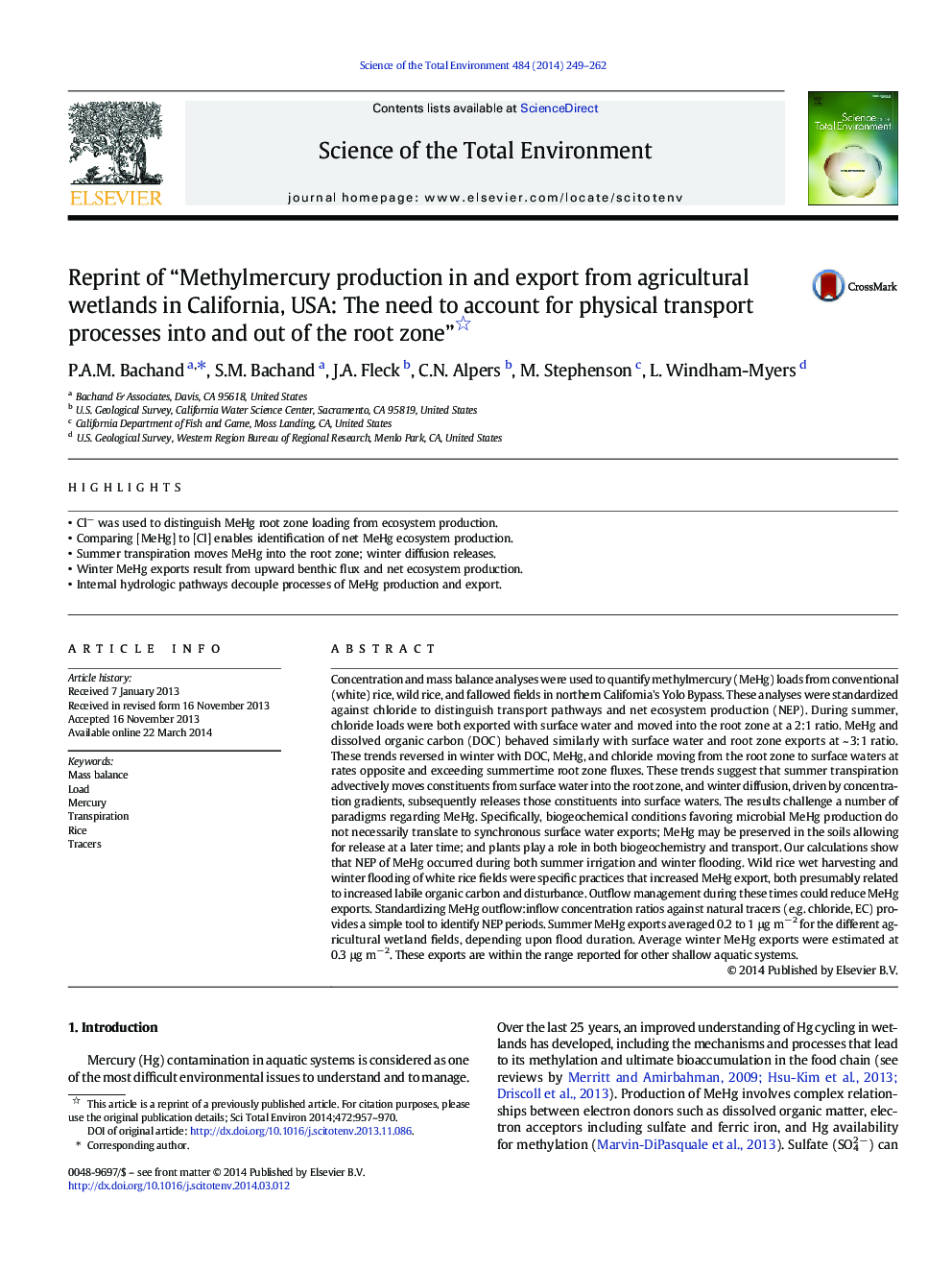| کد مقاله | کد نشریه | سال انتشار | مقاله انگلیسی | نسخه تمام متن |
|---|---|---|---|---|
| 6330637 | 1619784 | 2014 | 14 صفحه PDF | دانلود رایگان |
عنوان انگلیسی مقاله ISI
Reprint of “Methylmercury production in and export from agricultural wetlands in California, USA: The need to account for physical transport processes into and out of the root zone”
ترجمه فارسی عنوان
چاپ مجدد تولید کریستالی متیل کربن در تالاب های کشاورزی در کالیفرنیا، ایالات متحده آمریکا: نیاز به حسابداری برای فرایندهای انتقال فیزیکی به داخل و خارج از منطقه ریشه
دانلود مقاله + سفارش ترجمه
دانلود مقاله ISI انگلیسی
رایگان برای ایرانیان
کلمات کلیدی
موضوعات مرتبط
علوم زیستی و بیوفناوری
علوم محیط زیست
شیمی زیست محیطی
چکیده انگلیسی
Concentration and mass balance analyses were used to quantify methylmercury (MeHg) loads from conventional (white) rice, wild rice, and fallowed fields in northern California's Yolo Bypass. These analyses were standardized against chloride to distinguish transport pathways and net ecosystem production (NEP). During summer, chloride loads were both exported with surface water and moved into the root zone at a 2:1 ratio. MeHg and dissolved organic carbon (DOC) behaved similarly with surface water and root zone exports at ~ 3:1 ratio. These trends reversed in winter with DOC, MeHg, and chloride moving from the root zone to surface waters at rates opposite and exceeding summertime root zone fluxes. These trends suggest that summer transpiration advectively moves constituents from surface water into the root zone, and winter diffusion, driven by concentration gradients, subsequently releases those constituents into surface waters. The results challenge a number of paradigms regarding MeHg. Specifically, biogeochemical conditions favoring microbial MeHg production do not necessarily translate to synchronous surface water exports; MeHg may be preserved in the soils allowing for release at a later time; and plants play a role in both biogeochemistry and transport. Our calculations show that NEP of MeHg occurred during both summer irrigation and winter flooding. Wild rice wet harvesting and winter flooding of white rice fields were specific practices that increased MeHg export, both presumably related to increased labile organic carbon and disturbance. Outflow management during these times could reduce MeHg exports. Standardizing MeHg outflow:inflow concentration ratios against natural tracers (e.g. chloride, EC) provides a simple tool to identify NEP periods. Summer MeHg exports averaged 0.2 to 1 μg mâ 2 for the different agricultural wetland fields, depending upon flood duration. Average winter MeHg exports were estimated at 0.3 μg mâ 2. These exports are within the range reported for other shallow aquatic systems.
ناشر
Database: Elsevier - ScienceDirect (ساینس دایرکت)
Journal: Science of The Total Environment - Volume 484, 15 June 2014, Pages 249-262
Journal: Science of The Total Environment - Volume 484, 15 June 2014, Pages 249-262
نویسندگان
P.A.M. Bachand, S.M. Bachand, J.A. Fleck, C.N. Alpers, M. Stephenson, L. Windham-Myers,
